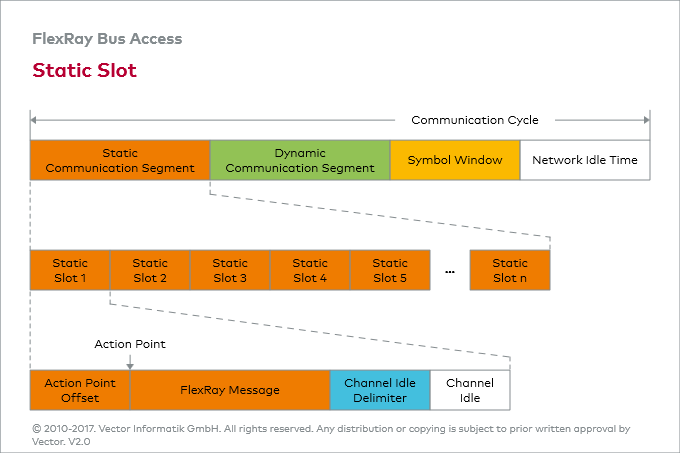Static Slot
Smooth deterministic message transmission during the static segment requires the static slot to be long enough. The length of the static slot is above all determined by the longest FlexRay message. Basically, a FlexRay message is made up of header, payload, trailer and control symbol. The so-called channel idle delimiter, which indicates the end of a FlexRay message, must also be considered.
Also affecting the length of a static slot are on the one hand the largest possible signal delay — the maximum allowable delay is 2.5 microseconds — and on the other hand the largest possible time deviation that any two FlexRay nodes may exhibit despite synchronization (precision).
A static slot is made up of four time segments. This ensures that a message can be received within the given static slot, even with a maximum signal delay and if FlexRay nodes with local clocks at the limits of being too advanced as well as being too delayed participate.
Each static slot begins with an offset, the so-called action point offset. This name is derived from the so-called action point, the point at which message transmission begins. The action point offset is followed by the action point and the message transmission. After the message transmission, immediately following the channel idle delimiter (11 recessive bits), there is a pause (Channel Idle) whose duration logically corresponds to the action point offset. Another figure clarifies this structure of a static slot.
It is evident that precision and signal delay are inversely proportional to the maximum attainable data rate in the FlexRay cluster: with increasingly poorer local clocks or signal delays that are increasing in size, the time span between the beginning of the slot and the action point is enlarged, which in the end reduces the maximum attainable data rate.


